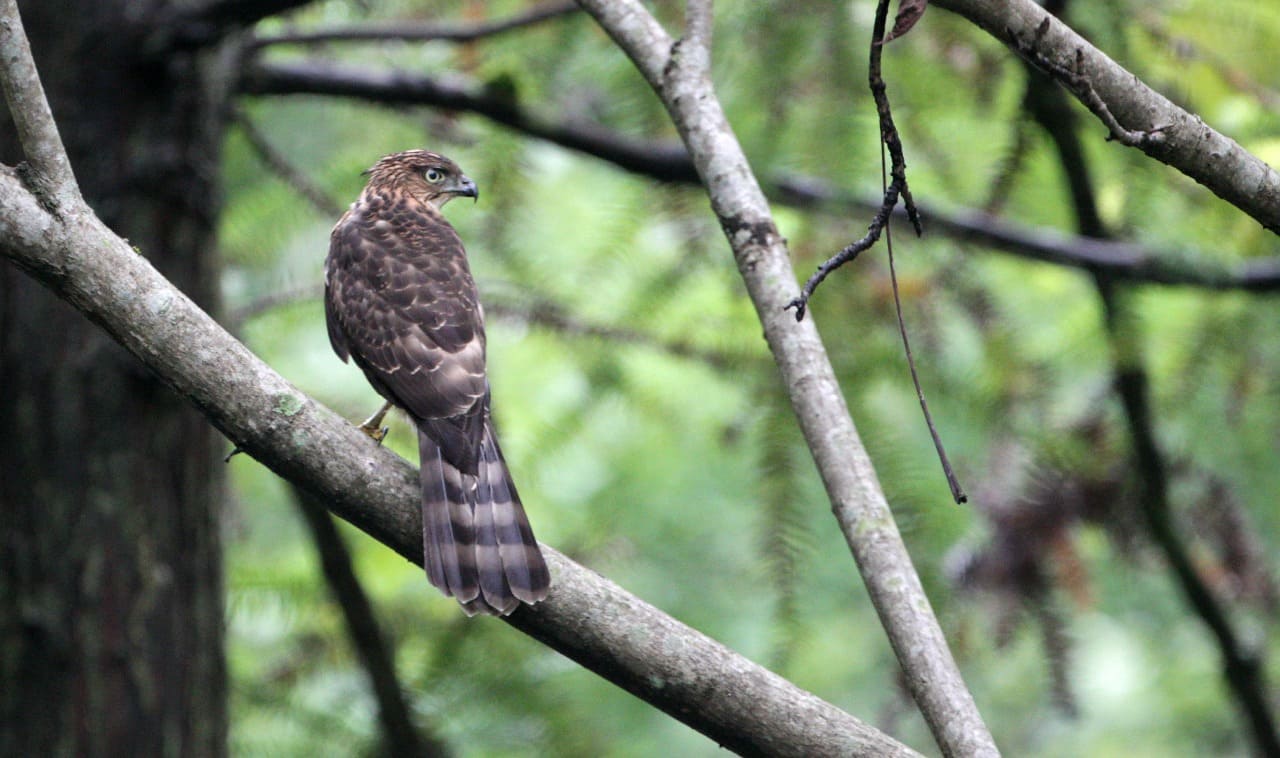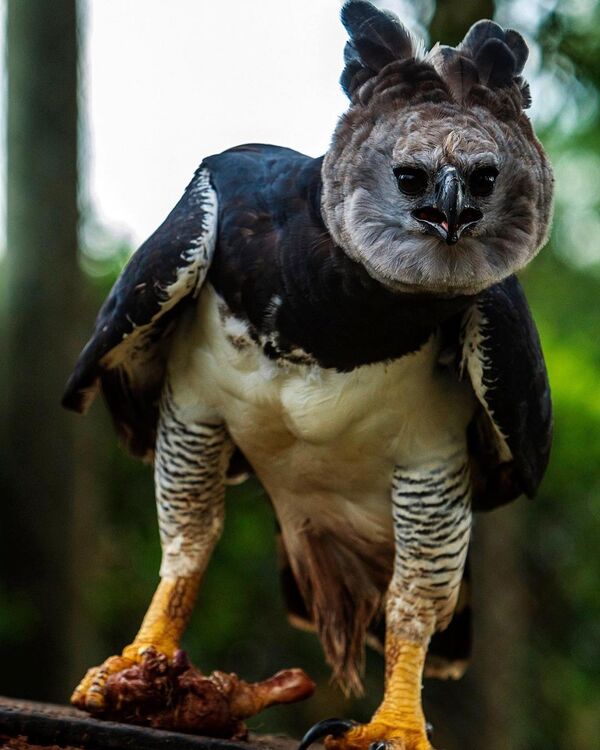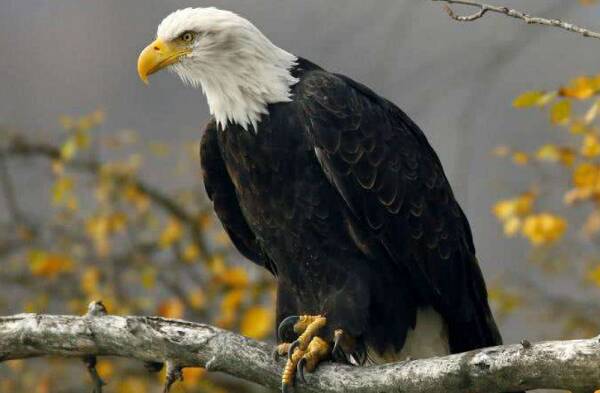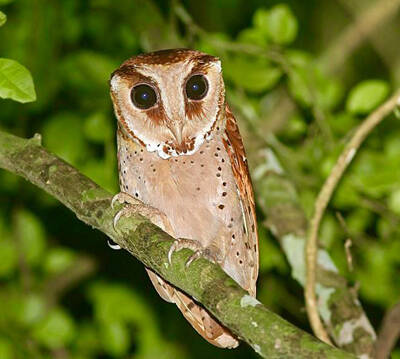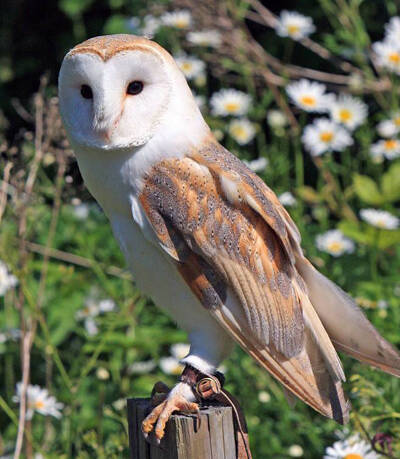Phaethon rubricauda
IUCN
LCBasic Information
Scientific classification
- name:Phaethon rubricauda
- Scientific Name:Phaethon rubricauda,Red-tailed Tropicbird
- Outline:Raptor
- Family:P.rubricauda
Vital signs
- length:450-460mm
- Weight:600-830g
- lifetime:
Feature
Somewhat territorial, monogamous
Distribution and Habitat
Origin: Australia, Bangladesh, British Indian Ocean Territory, Canada, Chile, China, Christmas Island, Cocos (Keeling) Islands, Comoros, French Polynesia, Guam, India, Indonesia, Japan, Madagascar, Marshall Islands, Mauritius, Mayotte, Mexico, Federated States of Micronesia, Mozambique, New Caledonia, New Zealand, Norfolk Island, Northern Mariana Islands, Palau, Philippines, Pitcairn, Reunion Island, Seychelles, Solomon Islands, South Africa, China, Tonga, United States (Hawaiian Islands), United States Minor Outlying Islands, Wallis and Futuna Islands.
Wandering: Brazil, Fiji, Kenya, Peru and Thailand.
Uncertain: American Samoa, Cook Islands, French Southern Territories, Kiribati, Malaysia, Maldives, Nauru, Niue, Papua New Guinea, Samoa, Somalia, United Republic of Tanzania, Timor-Leste, Tokelau, Tuvalu and Vanuatu.
Appearance
The average length of the Red-tailed Pied Piper is 95 to 104 cm (37 to 41 in), including the 35 cm (14 in) tail ribbon, and weighs about 800 g (30 oz). Its wingspan is 111 to 119 cm (44 to 47 in). It has a streamlined but solid body, with almost all white plumage, long red tail feathers and a vermilion bill. The plumage of males and females is similar. The iris is brown. A dark brown comma-shaped stripe extends from the back of the front area of the eye, passing through and covering the eye and extending to the ear coverts. The pupil is dark brown. The bill is red or orange-red. The bill is bright red, slightly lighter at the base, and the front half of the bill is slightly curved, with a serrated edge to facilitate hunting fish. The area around the nostrils is black. The feet are short, with small toes, and are fully webbed. The base of the legs and toes is light blue-purple, while the webs and toes are black. The white feathers on the head and rump are concealed with dark brown bas
Details
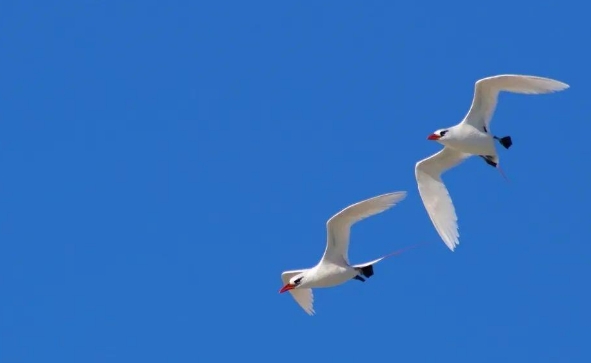
The Red-tailed Pi ... A dark brown comma-shaped stripe extends from behind the front area of the eye, passing through and covering the eye and extending to the ear coverts. The pupil is dark brown. The bill is red or orange-red. The bill is bright red, slightly lighter at the base, and the front half of the bill is slightly curved, with a serrated edge to facilitate hunting fish. The area around the nostril is black. The feet are short, with small toes, and fully webbed feet. The base of the legs and toes is light blue-purple, while the rest of the webs and toes are black. The white feathers on the head and rump hide a dark brown base, while the base of the shafts of the shoulder, back, tail feathers and tail coverts is dark brown. The two long tail feathers are orange-red, with about one-tenth of the base white, which may not be easy to see in flight. The white wings have a dark V-shaped pattern, the wings are long, and the shafts of the primary flight feathers are visible. The flight feathers of the upper wings often have a more obvious pink hue. Moulting occurs outside the breeding season, and the tail ribbons are replaced before other feathers. The tail ribbons may also be replaced at any time, and when one grows out, another will fall off. The fallen tail ribbons may be scattered around the breeding grounds. It is a very beautiful marine bird.
Size measurement: weight 600-830 grams; body length 450-460 mm, including the extended tail is 960-1020 mm, bill 66-69 mm, wings 330-339 mm, tail 360-428 mm, tarsus 30-69 mm.
Red-tailed gullwings are considered monogamous, and pairs of birds will maintain a pair relationship during the continuous breeding season. They nest in loose colonies on offshore islands and rock piles, rocky cliffs, coral atolls and islets. They rarely nest on the mainland. The nest itself is a shallow burrow located in the shade of sand or rock cracks, or under bushes. Because red-tailed gullwings are inconvenient to walk, they will fly into the wind and fall to the ground after stalling. The nest is usually located within one meter (3.3 feet) of the edge of a shrub (or other shady area) to reduce walking distance. The tropical bird often chooses shrubs with fewer trunks for easy access.
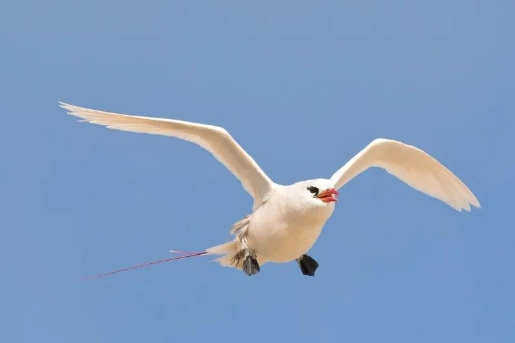
The species is somewhat territorial and will actively defend the nest area and surrounding pecking range, starting about three months before breeding. It is more aggressive in places where there are large groups or fewer suitable nesting sites. They adopt a defensive posture, which includes raising the humerus and bringing the wrists together, retracting the neck into the body and shaking the head from side to side, making the head feathers stand up and squeak. Pecking and fighting may break out, with two opponents pecking each other and banging their bodies, which can last up to 90 minutes.
This tropical bird may also mate according to tail feather length, which means that the tail feathers of mates may be similar in length, and birds with longer tail feathers are more attractive.
During courtship, the male and female birds take advantage of the rising thermals and spread their tails and bend downwards to fly vertically in circles. The courtship display is extremely spectacular. The male initiates an aerial courtship display, flying in large circles, alternating between gliding, brief rapid wingbeats, and low flights a few meters above the water, emitting sharp clucking calls, and gliding together over great distances above the sea. Initially flying together in small groups, they then repeat the display in pairs, eventually forming pairs. Once a pair is successfully paired and a nest is established, they no longer perform this display. During the breeding period, they usually return to their original breeding grounds and unite with their original mates.
Timing of breeding Birds south of the equator may not have a fixed breeding season. On islands close to the equator, eggs are usually laid from June to November, and most chicks leave the nest around January to February. On Christmas Island, the breeding time varies depending on local weather conditions. Some birds may remain on the breeding grounds year-round. On the subtropical Liddy Elliot Island off Queensland, they nest in winter, which scientists think may be to avoid the common breeding time of most migratory seabirds, such as the noisy wedge-tailed shearwater (sheepbird). Not much is known about their habits.
The female lays a single egg, which is incubated by both parents for 42 to 46 days. The male usually incubates the egg first after it is laid. The egg is 5.4 to 7.7 cm (2.1 to 3.0 in) long (averaging between 6.3 and 6.8 cm (2.5 and 2.7 in) depending on location) and 4.5 to 4.8 cm (1.8 to 1.9 in) wide, oval, light brown with brown and reddish-black markings, which are more prominent at the large end of the egg.
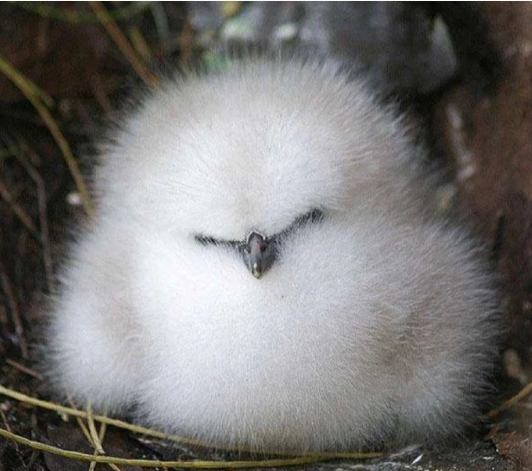
The chicks are helpless and unable to move (nest-dwelling and semi-altricial) at birth, with zero vision at birth, which does not open until 2 to 3 days old. Until a week old, they will only open their mouths when touched, so the parents must stroke the base of the beak to encourage feeding. Feeding takes place once or twice a day, usually around noon. The chicks are incubated by their parents until they are a week old, after which they hide under the parents' wings. They will also stand up and open their beaks to any nearby birds to beg for food. Both parents feed their young together, inserting their beaks into the chicks' esophagus and regurgitating food. The chicks are initially covered in gray or white down, and grow their first feathers, the scapula, at 16 to 20 days. Their feet and beaks grow rapidly, outpacing the rest of their bodies. The chicks remain in the nest for 67 to 91 days until they are fully grown.
Newly hatched chicks are covered in thin, long, grayish-white down feathers, with a lighter head. The area in front of the eyes is bare. Older chicks have grayer down feathers. In the third week, the primary, correct, and scapula feathers begin to emerge, and the chicks are mostly feathered after six weeks, with remnants of down still on the abdomen and under the wings, and fully feathered by eleven weeks. The chicks have a glossy white forehead, chin, throat, and abdomen, with distinct black horizontal stripes and scaly textures on the top of the head, nape, scapula, back, rump, and upper wing coverts. Their bills are dark gray with a light blue-gray base, and the legs and feet are gray.
The Redstart is usually silent in flight. Except during courtship displays, birds may give short greeting calls to their mates when arriving or leaving the nest. Birds emit low growls as defensive calls, and young birds make a series of chattering begging calls when approached by their parents.
The Redstart is found in the southern Indian Ocean and the western and central Pacific Ocean, from the coast of East Africa to Indonesia, south to the waters south of Japan, across to Chile, and to the Hawaiian Islands, where it is more common in the northwestern islands. It is common in waters below 24 to 30 °C (75 to 86 °F) and salinity below 35% in the southern hemisphere and below 33.5% in the northern hemisphere. In the Pacific, the southern limit of its distribution is along the summer surface isotherm of 22 °C (72 °F).
After breeding, the birds disperse widely. There is evidence that birds in the Indian Ocean move westward with prevailing winds, with young individuals released on Sugarloaf Rock in Sumatra and Western Australia and recovered in Mauritius and Réunion, respectively. Releases at Kure Atoll suggest that birds in the North Pacific move eastward with prevailing winds there. Strong winds sometimes blow them inland, explaining some observations recorded along the coast and outside their preferred habitat.
Johnston Atoll is the world's largest breeding colony of Red-tailed Pipits, with 10,800 nests in 2020. In the Pacific, the bird breeds on the Australian offshore territories of Norfolk Island and Lord Howe Island, and on the Coral Islands of Queensland, including Raine Island and Lady Elliot Island. In mid-2020, Australian scientists discovered a bird on Lady Elliot Island that had been released as a chick 23 years earlier but not seen since, returning to breed on the island. In New Zealand territory, the bird breeds in the Kermadec Islands. Elsewhere in the Pacific, it breeds in Fiji, New Caledonia, French Polynesia, Hawaii (with a large colony on Kure Atoll), the Cook Islands, Pitcairn Island, and islands in Japan and Chile.
In the Indian Ocean, large colonies occur on Europa Island, Aldabra Atoll, and Christmas Island, with smaller colonies on Madagascar, where the bird breeds on Nosevi Island. It is also found in the Seychelles and Mauritius. It also occurs in the Cocos Islands, an Australian territory in the Indian Ocean. The warm waters of the Lee Current promote breeding of the species at Cape Leeuwin in southwestern Australia, but it is rare on the east coast of New South Wales at corresponding latitudes. It also breeds on the Ashmore and Cartier Islands and Rottnest Island, and on the Sugarloaf Rocks, Wild Roll Point, and Busselton coastline in Western Australia.
Resident bird. Wanders close after the breeding season. Good swimmer and diver, better flyer, spending most of the time in the air. It is solitary, and except for returning to its original breeding grounds and looking for its original mate during the breeding season, it flies alone over the sea in search of food. It can both flap its wings and glide at high altitudes. It has excellent eyesight and can see underwater food from the air. When it finds food at sea, it can suddenly dive into the water from a height of more than 14 meters to catch it, and can stay underwater for about 25 seconds. It mainly feeds on aquarium/flying-fish.html">flying fish and squid, and also eats crustaceans.
Red-tailed harriers are strong flyers, but have difficulty walking on land, and walk with a shaky gait. They can hover in the air by flying into the wind; during courtship displays, paired birds may even fly backwards and circle each other.

